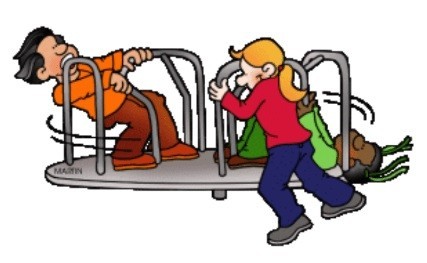
Overview
Title: Tug of War Activity
Grade: 5th Grade
Duration: 30 Minutes
Standards
Science - SC.5.P.13.1
Identify familiar forces that cause objects to move, such as pushes or pulls, including gravity acting on falling objects.
Language Arts - LAFS.5.RI.2.4
Determine or clarify the meaning of unknown and multiple-meaning words and phrases based on grade 5 reading and content, choosing flexibly from a range of strategies.
Objective
In this lesson, students will conduct an investigation to observe the effects of balanced and unbalanced forces.
Essential Question
- What makes objects move?
Vocabulary
Position • Force • Motion • Balanced Forces • Unbalanced Forces • Gravity • Speed • Acceleration • Velocity • Pull • Push • Mass • Friction • Magnet • Inertia
Background Information
Motion occurs when an object moves from one place to another. Motion is determined by the forces that act on the object. There are some movements that might cause other movements to take place. Things change when an object moves at the same speed and/or in a straight line. Things around us are constantly moving and changing.
Guiding Questions
- What makes objects move?
- What is the relationship between force and motion?
- What types of forces can you identify?
- What is needed to start an object moving?
- How does the mass of an object influence motion?
- How does friction affect a moving object?
- How are speed, velocity, and acceleration related?
- What forces cause objects to change their motion?
- How do Newton’s laws explain the principles of force and motion?
- How is momentum related to each of Newton’s 3 laws of motion?
Inquiry Type
- Structured Inquiry – Whole Group: Activity – Tug of War Worksheet
Tug of War Activity
Materials
- Tug of War Worksheet
- Tug of War rope
- Pencil
Procedure
- The following activity can be done outside in an open area, or in a classroom that has a cleared out area to be able to play tug-of-war.
- Start out by leading students to an open area.
- The rope should be placed in the middle of the open area.
- Begin by asking the students the following questions:
- Is this rope moving?
- How can we make the rope move?
- While students brainstorm, make sure to jot down the ways to make the rope move on the board or on a piece of paper. (Make sure to use words such as push and pull that will guide them to use their prior knowledge.)
- After brainstorming, students will be exploring the concept of force using the game tug-of-war.
- Go over with students how tug-of-war can represent balanced and unbalanced forces.
- What would happen if you have 5 people on one side and 5 on the other?
- What about one person versus 5?
- Would it be balanced or unbalanced?
- Have them write their predictions on the on the “balanced vs. unbalanced” forces observation page.
- Explain to students that they will be coming up to the rope to test different scenarios.
- They must follow instructions carefully for the activity to work.
- Stand on your own at one end of the rope. Ask class what will happen if you pull the rope. (balanced or unbalanced?)
- Next, ask one student to come grab the other end of the rope and ask class what will happen if you both pull.
- In unison, both of you should pull.
- Will this be balanced or unbalanced? Why?
- Ask another student to come to the “losing” side and perform the tug of war again. (balanced or unbalanced).
- Continue adding students to either side to represent that the number of people on one side of the rope does not matter. What is important is which side can exert the most force to create an unbalanced force. If equal forces are pulled on both sides of the rope, it is a balanced force. Also, explain how friction is an important role in the activity.
- Once the observation is over, tell class to return to the room/their seats.
- Discuss their predictions from earlier and whether or not they were correct about whether the number of people on each side has an impact on the force that is exerted.
- Facilitate a discussion on balanced and unbalanced forces.
- Have students fill out the balanced vs. unbalanced reflection page
- The main focus should be that the rope moved in the direction that had the largest force upon it.
- Everything has force upon it.
- If an object isn’t moving, there are balanced forces upon it (the gravity pulling it down to earth and the ground pushing the rope up)
- If an object is moving, the forces have become unbalanced.
- The force of gravity is less that the force of someone picking up the rope which makes the rope move.
